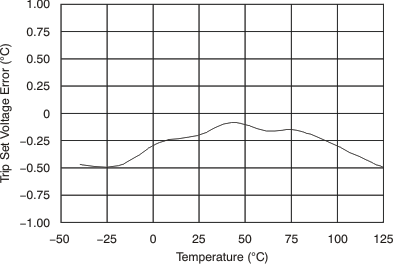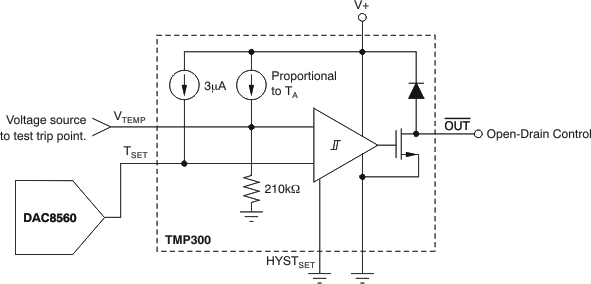ZHCSJ85F June 2005 – January 2023 TMP300
PRODUCTION DATA
7.2.4 Using a DAC to Set the Trip Point
The trip point is easily converted by changing the digital-to-analog converter (DAC) code. This technique can be useful for control loops where a large thermal mass is being brought up to the set temperature and the OUT pin is used to control the heating element. The analog output can be monitored in a control algorithm that adjusts the set temperature to prevent overshoot. Figure 7-3 shows the trip set voltage error versus temperature, which shows error in °C of the comparator input over temperature. Figure 7-4 shows an alternative method of setting the trip point by using a DAC.
 Figure 7-3 Trip Set Voltage Error vs Temperature
Figure 7-3 Trip Set Voltage Error vs Temperature Figure 7-4 DAC Generates the Voltage-Driving TSET Pin
Figure 7-4 DAC Generates the Voltage-Driving TSET Pin